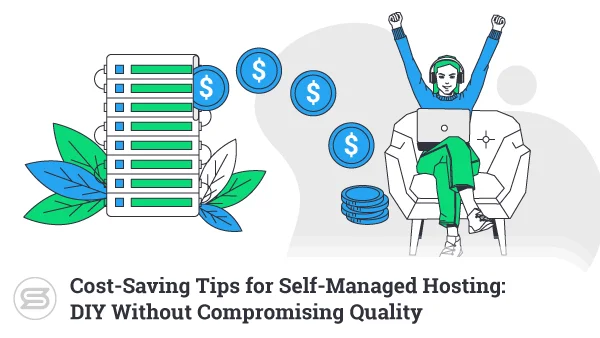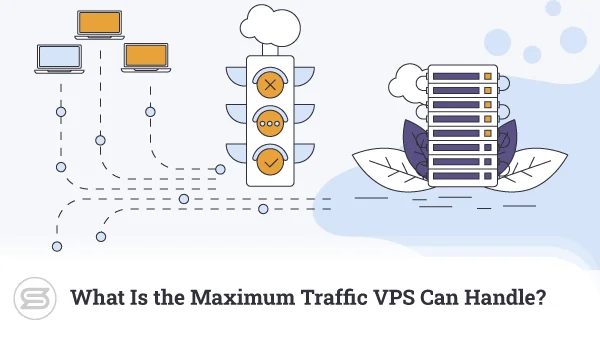There are hundreds of different ways to dip your toes in the website building game and establish a solid online presence. Personal projects like hobby pages, portfolios, and family memory projects are a great way to gain some experience in web development and insights into any content management system (CMS).
On the other hand, business endeavors like creating an ecommerce shop or an affiliate website will help you monetize your efforts and build a reputable brand that will bring income for years to come.
But whatever the project, there are some essentials that EVERY webmaster is looking to achieve – stunning visual outlook, hefty amounts of traffic, fast-loading pages…
Our mission today is to better understand the latter.
What makes your server and website slow down? How does that affect your audience? What are some of the best ways to tackle the obstacles?
These are the kinds of questions we will answer with this blog article, so stay tuned and let’s take a journey through the depths of site performance together.
What Really is a Managed VPS Server?
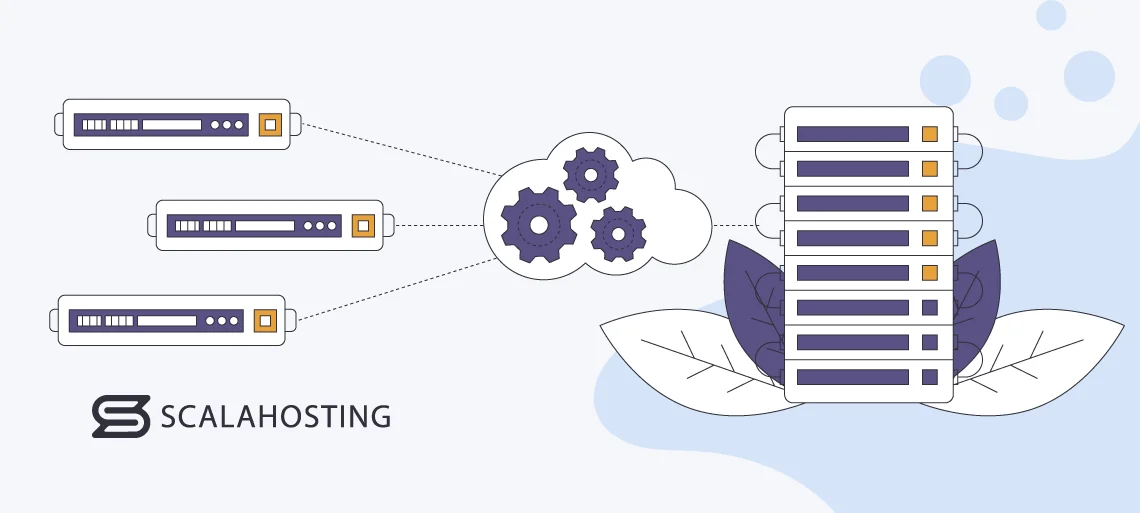
A VPS (virtual private server) is one of the most popular web hosting services nowadays. It serves as a bridge between shared hosting and dedicated servers, taking the best out of both worlds – offering the affordability of the former and the enhanced performance of the latter.
Through a process called virtualization, providers create virtual “slices” from a physical machine and allocate them to separate clients. This caged environment ensures each user gets a dedicated share of system resources – CPU, RAM, and disk space – without interference from others. This alleviates one of the main issues with shared hosting: resource hogging. Gone are the days of service downtimes caused by traffic spikes on neighboring accounts.
For those who prefer a hassle-free experience, managed VPS hosting comes into play. With a managed VPS, the hosting provider takes care of server maintenance, including software updates, security patches, performance monitoring, backups, and technical support. This allows users to focus on their websites and applications without needing advanced system administration skills.
How a Managed VPS Server Can Boost Your Business
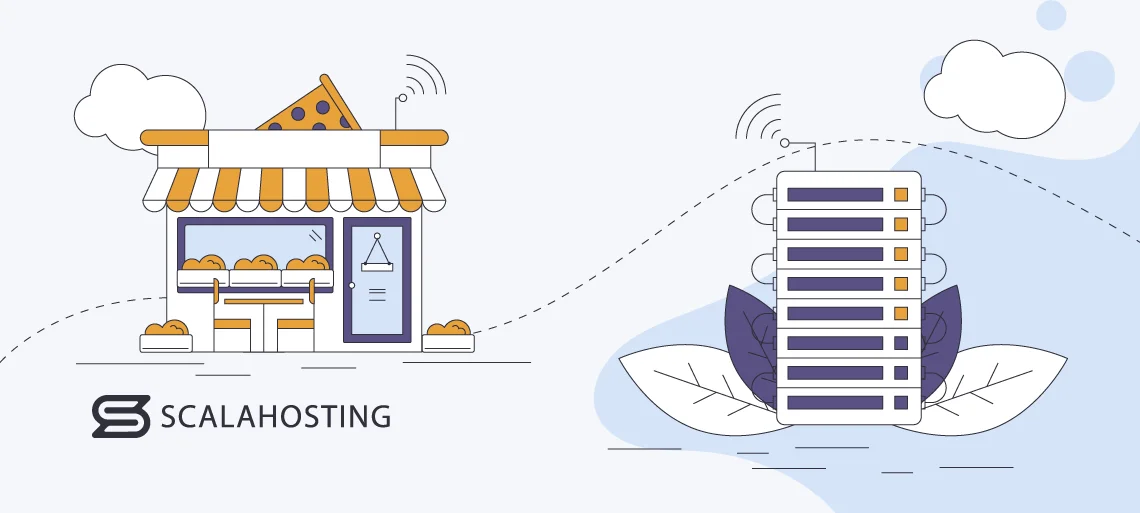
The nature of managed VPS plans makes them a very lucrative option for individuals and business enterprises alike. Instead of choosing between performance or big financial investments, you have a service that covers all your bases without breaking the bank.
This includes:
- Fast-loading pages – visitors love pages that load fast, which makes it something you should love as well. Right from choosing your hosting provider and site-building application, you are faced with important choices that will determine your future success (or lack thereof). Look for lightweight app solutions and vendors with highly optimized VPS servers for ultimate performance.
- Scalable resources – virtual private servers not only give you plenty of resources but allow you to dynamically change them when the need arises. This way, you can be sure you’re not overpaying for anything you’re not currently using while still having the overhead to accommodate more users coming in.
- Constant uptime – VPS providers have general service level agreements (SLAs) that guarantee your uninterrupted uptime. This is crucial for brands looking to build a perfect online reputation and ecommerce stores where every second of downtime can result in missed opportunities and lost sales.
- Rock-hard defenses – being the sole user of a virtual server means you have full control of who can access it and what they can do with it. Following security guidelines and keeping a strict backup strategy will severely minimize the risk of breaches and malicious activities.
- Free features and add-ons – managed VPS providers often include free complimentary services that usually come in handy in your website building process. For example, ScalaHosting clients can get a no-cost SSL certificate, dedicated IP, CDN, daily backups, security monitoring, and more just for signing up with any VPS hosting plan.
- 24/7 customer service – you are never truly alone with a managed solution. Your host’s support team is ready to put years of experience into action when you need them. After all, who can better ensure your environment is well-suited for your online project than the people who do this for a living?
Now that we know the ins and outs of virtual private servers, we should be well-aware of what to expect when opting for such a plan. But what if, after so many considerations, we still see our project performing poorly? What can we do to shift into the next gear and enjoy the lightning-fast speeds the VPS service promises?
We will now look at some of the culprits that can slow down our website and the best way to tackle them.
Why is My Managed VPS Server Slow?
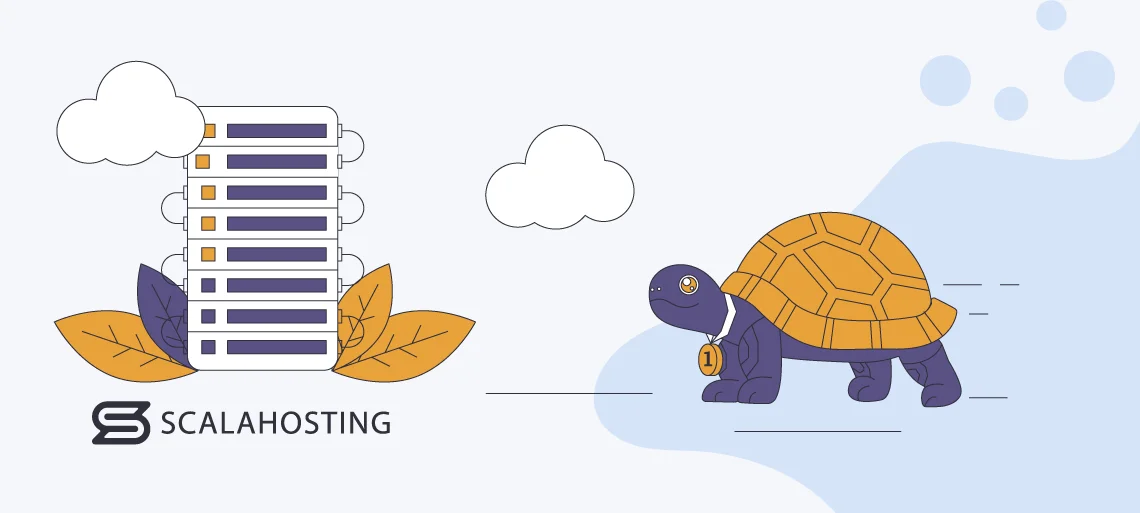
Building a fast website is a battle for every millisecond. Every minor hindrance has to be overcome to achieve the optimal speed every webmaster is looking for.
So, where do we look if we feel that our pages can load even quicker?
Insufficient Resources Allocation
More often than not, the problem with slow servers is the amount of system resources you have on your account. Be it CPU, RAM, disk space, or bandwidth, we have to ensure that our online project has plenty to go around.
But even if you have enough to begin with, websites grow, functionalities expand, plugins are needed, and all that consumes an increasing amount of resources. If you start hitting some limits – service interruptions and slowdowns are quite common.
How to Fix
Start by outlining your project even before you find a hosting provider. This will allow you to get a better idea of your needs and help the host suggest the most appropriate plan. If you already have a website that has started to slow down, make sure to keep a close eye on your resource consumption.
Many vendors offer some kind of monitoring, and some even go as far as to notify you if you are close to hitting any limits.
IMPORTANT: ScalaHosting offers resource-packed cloud VPS hosting plans with easy scalability options. If you see you are running out of RAM while all your other numbers are well within the limits – you can just add more operating memory without having to upgrade the entire package plan. The same goes for CPU and disk space.
Resource Contention
The great thing about VPS services is that you’re not limited in the number of apps and websites you can host on a single server. This hides another risk, though. Each of those applications adds to the server load and runs processes that take up your system resources.
Additionally, having numerous plugins and add-ons on a single website might add to its functionality but ultimately is another burden that might affect your page loading speed.
How to Fix
Only keep the essentials on your VPS plan. If you run multiple projects and one of them is mission-critical – make sure to isolate it from the others on its own virtual server. If it is a case of a single website with many add-ons – go through your plugin list and remove anything that you’re not using or is essential for the project.
In fact, doing regular plugin checks is always a great idea, keeping you in tune with what you have and what you might need for the future. Frequent cleanups will guarantee you are not wasting VPS resources on unnecessary functions and projects.
IMPORTANT: Multifunctional plugins can save you a lot of space and CPU/RAM. Instead of using five add-ons for five different (yet similar) functionalities, you can find a single one that can fulfill all of them. Naturally, always do your own research and tests to ensure you utilize trusted plugins with an active community and good support.
Hardware Issues
What is a server in its essence? It is just a bunch of hardware components (processor, motherboard) that are designed to run an operating system (OS) and handle some underlying resources (CPU, RAM). Even if you are on a cloud hosting plan, the network of servers boils down to some bare-metal machines spread around the world. Those machines are not everlasting, and some of their components will inevitably run out of power at some point. When such failures occur – your site performance drops and can even become completely inactive.
How to Fix
Opting for a managed VPS plan solves many of the issues in that aspect. Hardware replacement is part of the services that your hosting support team should cover, and many hosts have strict policies on how such problems should be handled without the client even noticing it. If you run your own server, though, such maintenance tasks require your hands-on attention.
Running hardware diagnostic tests, checking for loose cables, ensuring everything is in its slot, and identifying faulty components are all responsibilities you should perform regularly if you don’t want to wake up to a nasty surprise one day. Keeping a list of your hardware parts and when each was last replaced is a good idea.
Network Congestion
Your network typically transfers data packets from your visitors to your web server and vice versa. The process is relatively simple – the user sends a request for a specific page or functionality they need to access. The network processes that to the server, which sends back the needed information.
But what happens if your network gets too many requests at once?
Latency, packet loss, and service interruptions are just some of the problems you can expect. DDoS attacks are a great example of network congestion – you get tons of bot traffic that sends constant requests to your server and consumes all available bandwidth until your machine eventually gives up.
How to Fix
The easiest place to start is your available bandwidth. Even though many hosts give you unmetered bandwidth, some still impose limits on your web traffic. Ensuring you have enough is a must in such cases.
Another good piece of advice is to monitor your network performance and prioritize important traffic. For example, you are running tests that consume a lot of bandwidth. Instead of doing them during peak traffic periods, you can schedule them for times with less workload and avoid congestion.
You can also try to check your devices and hardware to see if any of them are creating bottlenecks and follow policies like Quality of Service (QaS).
Software Configuration Issues
This is one of the more common issues when it comes to slow services. Building an app or website on a hosting server involves various software solutions working in unison to bring you the desired look and functionalities. However, these software tools do not always integrate well with each other or are designed to perform well in all kinds of environments.
Even if you find solutions that work out of the box – keeping them up to speed with changing technologies is also detrimental to their optimal operation. Outdated software can create bottlenecks and is a major reason for poor security and network breaches.
How to Fix
Just like with your hardware components, you have to regularly monitor all software solutions and ensure they are properly updated to their latest stable version. Developers often add new functionalities in new releases, but more importantly, they apply security patches and fix reported issues to keep their offerings up to the top standards.
Naturally, you would want to test the environment to see where the congestion is coming from, but before you do that, make sure to back up your entire project to avoid making a bigger mess. Once you have an offsite archive of your data, you can safely turn off different components to see which one might be the culprit.
Inadequate Server Management
It might sound simple enough, but your server management tasks have to be clearly outlined and performed under a strict schedule. Far too many times, our practice has shown that VPS slowdown problems stem from neglected practices, such as keeping outdated software, lack of security improvements, or no performance optimizations.
Server maintenance is not a one-off task, and even the best configurations have to be carefully monitored over time to avoid upcoming issues.
How to Fix
Just like with hardware issues, your best bet here is to trust a reputable provider like ScalaHosting and opt for a managed VPS service. Server maintenance is part of the tasks covered by your support team, so why not leave the technicalities to the professionals and focus on growing your business?
Regardless of whether you leave it to the host or perform it yourself, remember that the proactive approach is the smartest move here. Instead of waiting for a problem to happen before you deal with it, keep a constant lookout for suspicious server behavior and eliminate the risks before they turn into real issues.
Overloaded Server Environment
Apart from your network, your server environment can also be too overloaded to function properly. Even though you have a predetermined set of resources and can practically host an unlimited number of projects on them, you have to remember that too many will inevitably create some kind of congestion.
Every operating system, software tool, and add-on needs its fair share of resources not just to run but to run fast.
How to Fix
The role of your hosting provider is detrimental here. They are the first line of support for your web projects and can easily see if something in particular is causing your VPS to slow down.
Equipped with the right monitoring tools, you too can help in that aspect – keep a close eye on what is creating most of your load, and, if needed, move it to its separate server (or add more resources to your current setup).
IMPORTANT: ScalaHosting gives clients a number of different tools to monitor server load and keep servers clean. SShield, for example, is a unique security solution that will help you proactively tackle suspicious traffic and keep it away from overloading your hosting configuration.
Poorly Optimized Applications
Whether you work with a ready-made content management system (CMS) or custom software, app optimization is crucial for your site performance. Many times, installing a single piece of software or plugin can create bottlenecks, even though the actual application is small in size.
Software solutions can be poorly coded out of the box or might not pair well with your current infrastructure.
How to Fix
Having some technical experience can greatly help you here. Determining if a piece of software is faulty to begin with is just the first step to resolving the issue. This is why many web developers prefer to work with open-source applications – the underlying code is out there for everyone to see or modify. Keeping your software and add-ons properly updated is also a must as it often deals with impending issues with performance or security.
ScalaHosting and Website Speed
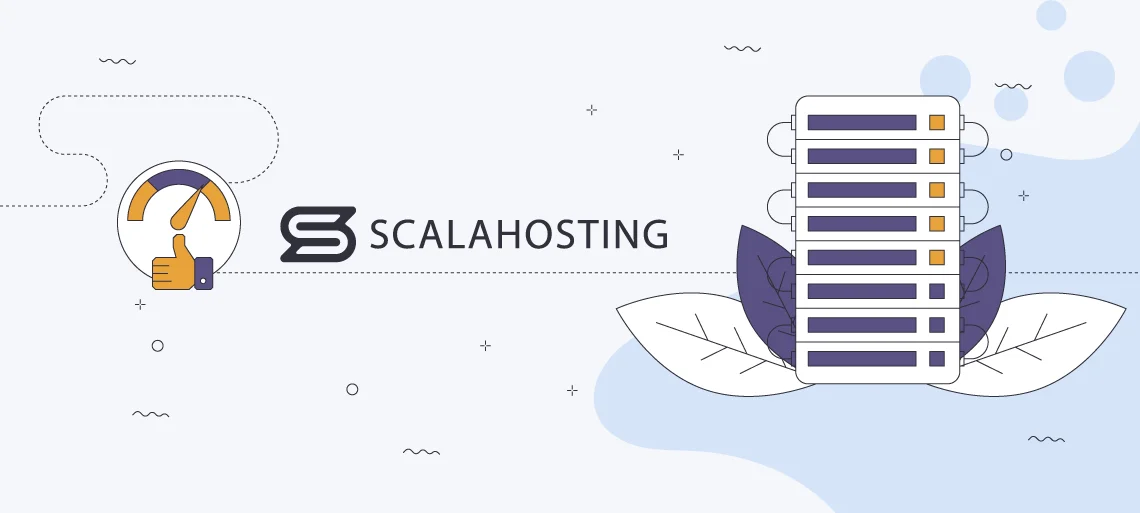
ScalaHosting always recommends checking out managed VPS packages for optimal site performance.


Best of all, our hosting support will always be there when you need them. Our operators have undergone regular training sessions to increase their qualifications, and they are ready to put all that knowledge to the test for you.
We will monitor the performance of your server, watch out for network bottlenecks, replace hardware components, perform scheduled maintenance, and even help you with app updates.
Contact ScalaHosting today and forget about slow and unresponsive services. Your business deserves the utmost attention, and our support team is ready to help you with that.
Conclusion
Millions of websites suffer from poor performance every year. It’s only natural given how many reasons there might be for those interruptions – hardware and software failures, lack of maintenance, congested networks, or insufficient resources, to name a few. Careful research and proactive behavior are a must if you are looking to keep your pages fast and responsive.
The choice of hosting provider also plays a pivotal role. Picking the right partner means you are offloading most of the daunting tasks to your host and setting yourself in an environment where many of those issues are already considered and the risks – lowered to a maximum.
Frequently Asked Questions
Q: What is VPS latency?
A: Server latency is a metric that outlines how long it takes for a web request to go from the user’s location to your server and back. Latency is calculated in milliseconds (ms), and you want to have as small a number as possible. If the result is too high – your visitors will get much slower page loads and, ultimately, leave before the content fully appears on their screen.
Q: Is VPS hosting fast?
A: In its nature, VPS hosting is one of the fastest services out there. You are the sole user of a virtual server’s account, and neighboring projects cannot interfere with your site’s performance. What’s more, scalable VPS plans allow you to add resources with a simple mouse click, so there is practically no risk of running out of RAM or CPU, even in times of high traffic.
Q: How do I check my VPS performance online?
A: There are numerous online tools that measure website speed and overall performance, including the underlying server metrics. Solutions like GTMetrix, Pingdom, and DebugBear are used by hundreds of thousands of people and contain valuable insights on your current site speed and how much each element along the way is slowing you down.

